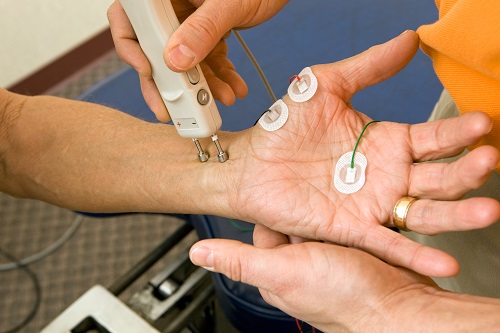Lee Huber tells us why screening for MSDs can help organizations benefit in the long term
Musculoskeletal disorders (MSDs)—such as carpal tunnel syndrome, hand tendonitis and shoulder inflammation—cost the U.S. economy between $13 and $15 billion annually. As a result, many executives who promote MSD prevention need to look carefully at better testing for predicting who is at risk during hiring and before putting people in new jobs. Such screening should be carried out after an applicant is given a conditional job offer, in accordance with the Americans with Disabilities Act (ADA). In theory, screening employees minimizes hand disorders in jobs having upper extremity MSD risks. Screening is also thought to benefit employees by achieving proper diagnoses and foregoing unnecessary surgery.
In comparison, federal and state OSHA regulators expect inherently hazardous jobs to be evaluated, and the risks designed out of them, to the extent possible. Companies having taken initial risk reduction steps and refinements are most likely to benefit in the long term. On the other hand, regulatory compliance officers put little stock in what they consider to be administrative efforts, such as employee screening to control potential injuries. Therefore, the use of post-offer screening is not likely to ward off potential OSHA enforcement concerns.
Other governmental agencies mandate close adherence to their regulations, like the Equal Employment Opportunity Commission (EEOC) and the ADA. In accord with ADA requirements particularly, job-related screening is a significant issue, particularly for identifying problems with workers’ upper extremities. Whether by choice or by mandate, employers would be well-advised to establish some kind of post-employment screening process to determine employees’ susceptibility to MSDs as a matter of prevention. Testing may include fitness-for-duty, electronic screening, written exams, non-work-related physicals, strength capability, clinical exams (e.g., Tinel’s sign or Phalen’s manoeuvre) and others.
A doctor gives an NCV (nerve conductor velocity) test.
The NCV test has its faults
The current “gold standard” for MSD diagnosis is the NCV test, which measures the speed of impulses through a nerve, using an electrical stimulus to the nerve. NCV testing costs around $550 per limb, however, not counting attending physician evaluation charges. It also regularly produces false negatives for symptomatic people and false positives for asymptomatic people.
Given NCV’s shortcomings, effective post-offer screening needs to consider a discussion of best practices in the screening industry, regulatory practices and the effectiveness of screening itself. The National Institute of Occupational Safety and Health recommends that if screening is incorporated into company protocol, five factors should be considered to determine if test procedures are valid: they must be safe to administer, reliable in their data, job-related, practical and predictive of risk. These criteria tend to exclude most screening methods.
Senior management demands for fiscal responsibility require a close look at methods purported to reduce injury through predictive analysis. The consensus among professionals who make injury reduction and prevention their livelihood is that the highest cost benefits are derived from investing in job and design modification. As a result, the ergonomic risks that cause upper extremity MSDs in the first place are reduced.
Adequate risk reduction
The methods for achieving optimal results through ergonomic initiatives lead researchers to basic conclusions for reducing risk in the vast work universe. Risk reduction still comes down to the proper tools to perform the job, appropriate materials, adequate workstation designs and sound risk management. When these elements are properly evaluated, chosen and utilized, the worker has a chance to excel without injury and the employer has the opportunity to reap the benefits of injury-free workers with optimal productivity.
It is suggested that progressive companies are better served by continuing to invest in proven prevention methods such as job modifications, redesigning equipment and/or improving job methods to reduce ergonomic risks in higher hazard operations. This is because there are as yet no consistently reliable, cost-effective, scientifically validated criteria for screening employees to prevent upper extremity MSDs. Until there are, these measures will have to suffice.
This article appeared in the Summer 2016 issue of Cardinus Connect magazine. You can download your free version here.
Looking for a solution to combat MSDs? Then why not try Healthy Working, our latest office ergonomics software? It helps employees assess their own risk and put in place the changes needed to combat it with help from management teams.
Reprinted with permission from Risk Management Magazine. Copyright 2005 Risk and Insurance Management Society, Inc. All rights reserved.






